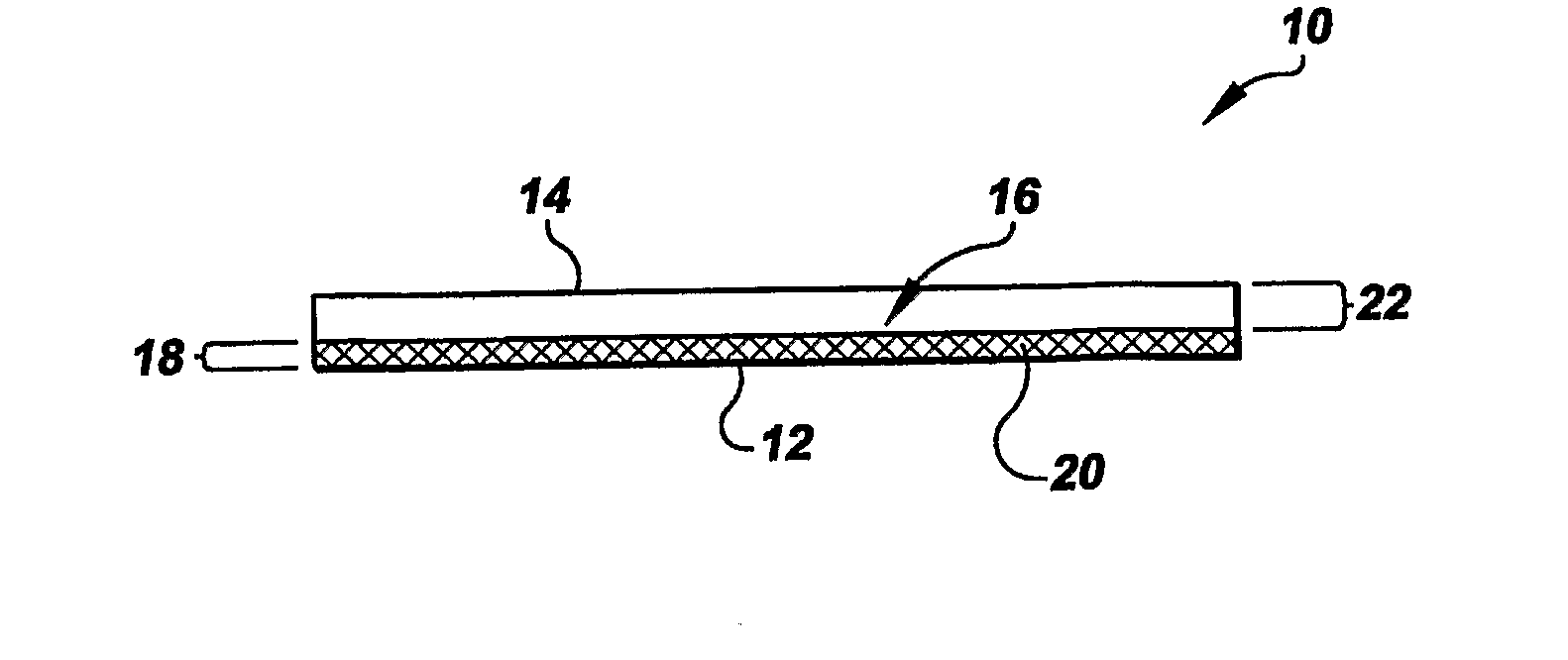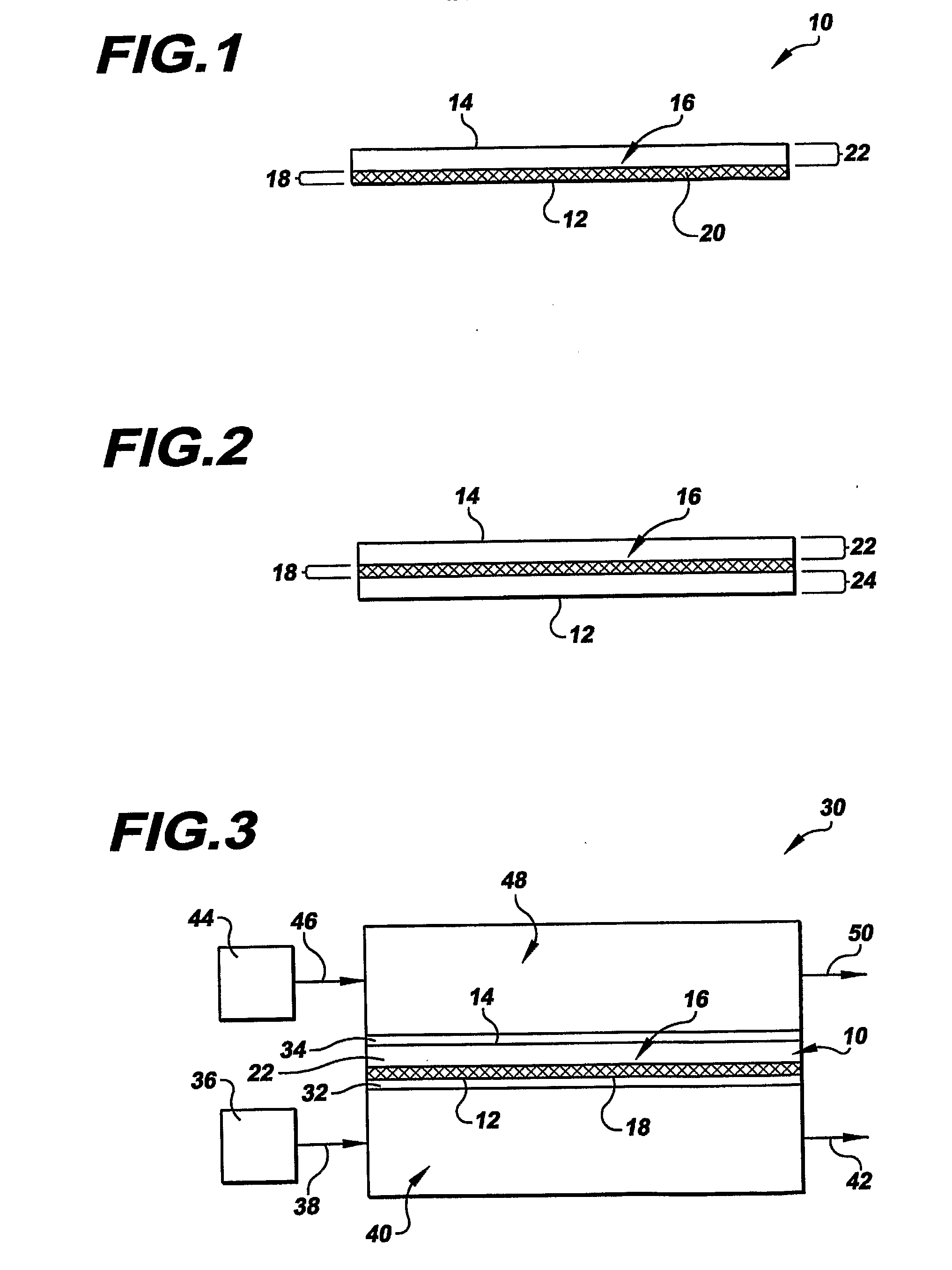Composite Water Management Electrolyte Membrane For A Fuel Cell
a fuel cell and electrolyte membrane technology, applied in the field of fuel cells, can solve the problems of increasing hydrophilic carbon within the microporous region, electrically conductive carbon within the membrane not providing a short circuit between the catalysts, etc., to facilitate enhanced water management, facilitate hydration of the pem, and effectively remove water
- Summary
- Abstract
- Description
- Claims
- Application Information
AI Technical Summary
Benefits of technology
Problems solved by technology
Method used
Image
Examples
Embodiment Construction
[0016]Referring to the drawings in detail, a composite electrolyte membrane is shown in FIG. 1, and is generally designated by the reference numeral 10. The membrane 10 defines a first contact surface 12 and an opposed second contact surface 14. (By the phrase “contact surface”, it is meant that the membrane 10 is a generally flat, disk-shaped construction, and the “contact surfaces” of the membrane 10 are constructed to be positioned in intimate contact with adjacent layers of a fuel cell, as opposed to being at a perimeter of the membrane 10.) An ionomer component 16 extends continuously between the contact surfaces 12, 14 of the membrane. A microporous region 18 is defined within the ionomer component 16 between the first and second contact surfaces 12, 14. The ionomer component 16 is a hydrated nanoporous ionomer that consists of any suitable cation exchange resin that is compatible with an operating environment of an electrochemical cell. An exemplary material for constituting ...
PUM
| Property | Measurement | Unit |
|---|---|---|
| diameter | aaaaa | aaaaa |
| diameter | aaaaa | aaaaa |
| diameter | aaaaa | aaaaa |
Abstract
Description
Claims
Application Information
 Login to View More
Login to View More - R&D
- Intellectual Property
- Life Sciences
- Materials
- Tech Scout
- Unparalleled Data Quality
- Higher Quality Content
- 60% Fewer Hallucinations
Browse by: Latest US Patents, China's latest patents, Technical Efficacy Thesaurus, Application Domain, Technology Topic, Popular Technical Reports.
© 2025 PatSnap. All rights reserved.Legal|Privacy policy|Modern Slavery Act Transparency Statement|Sitemap|About US| Contact US: help@patsnap.com


